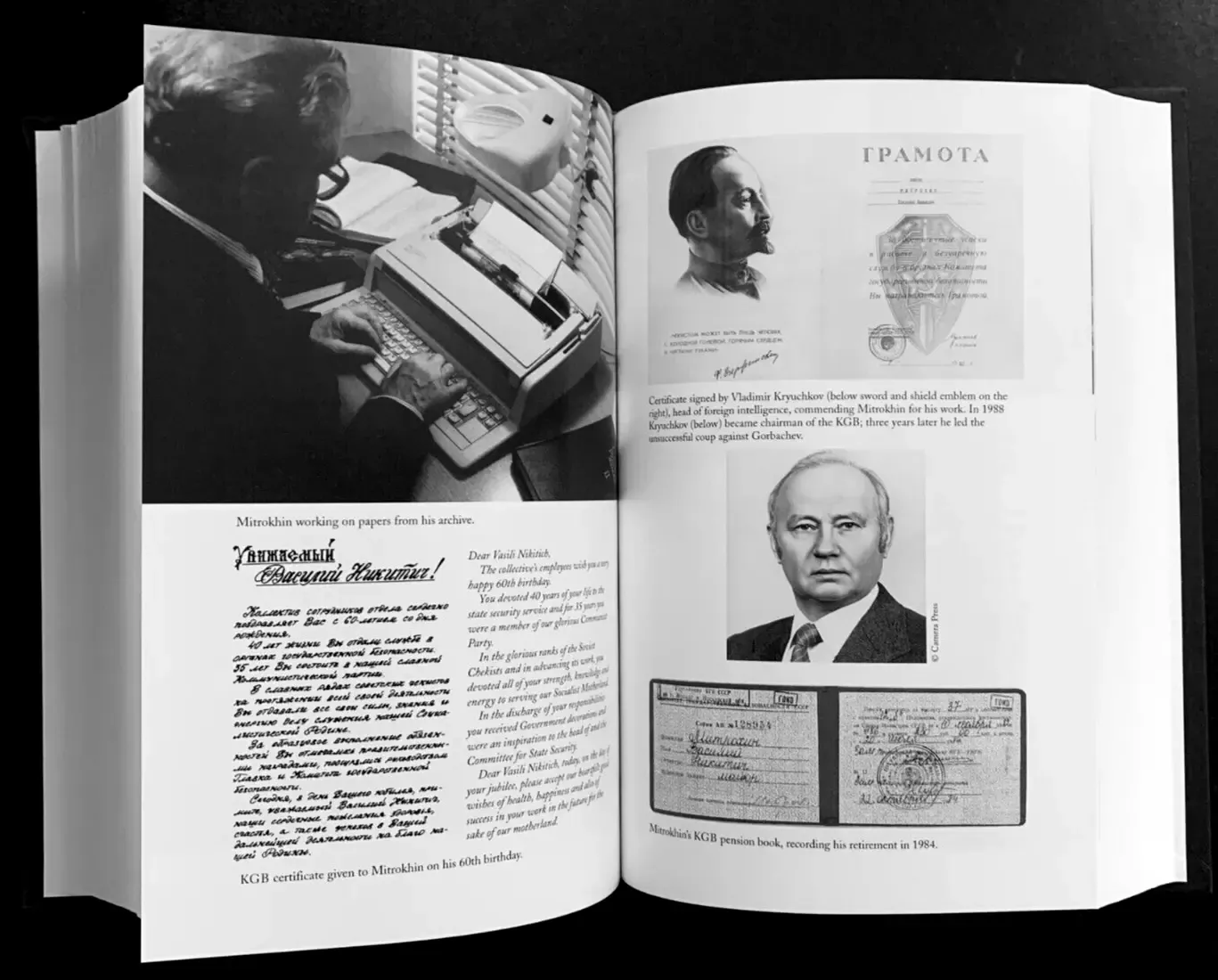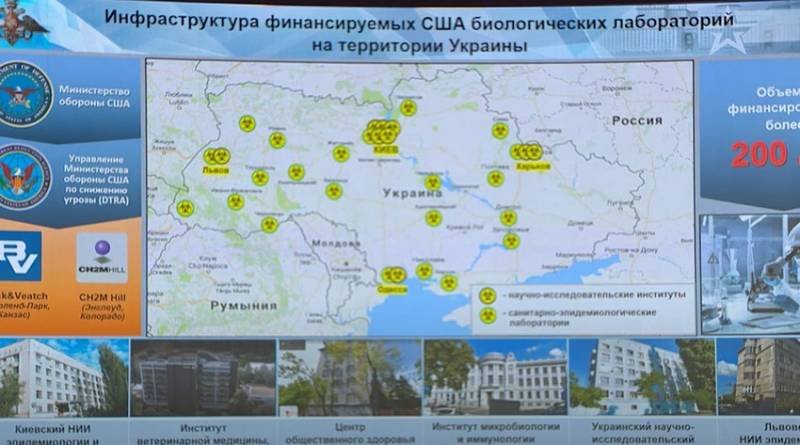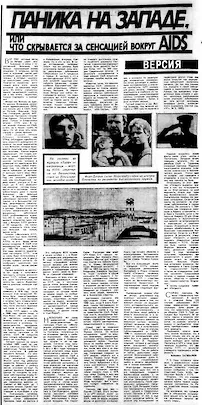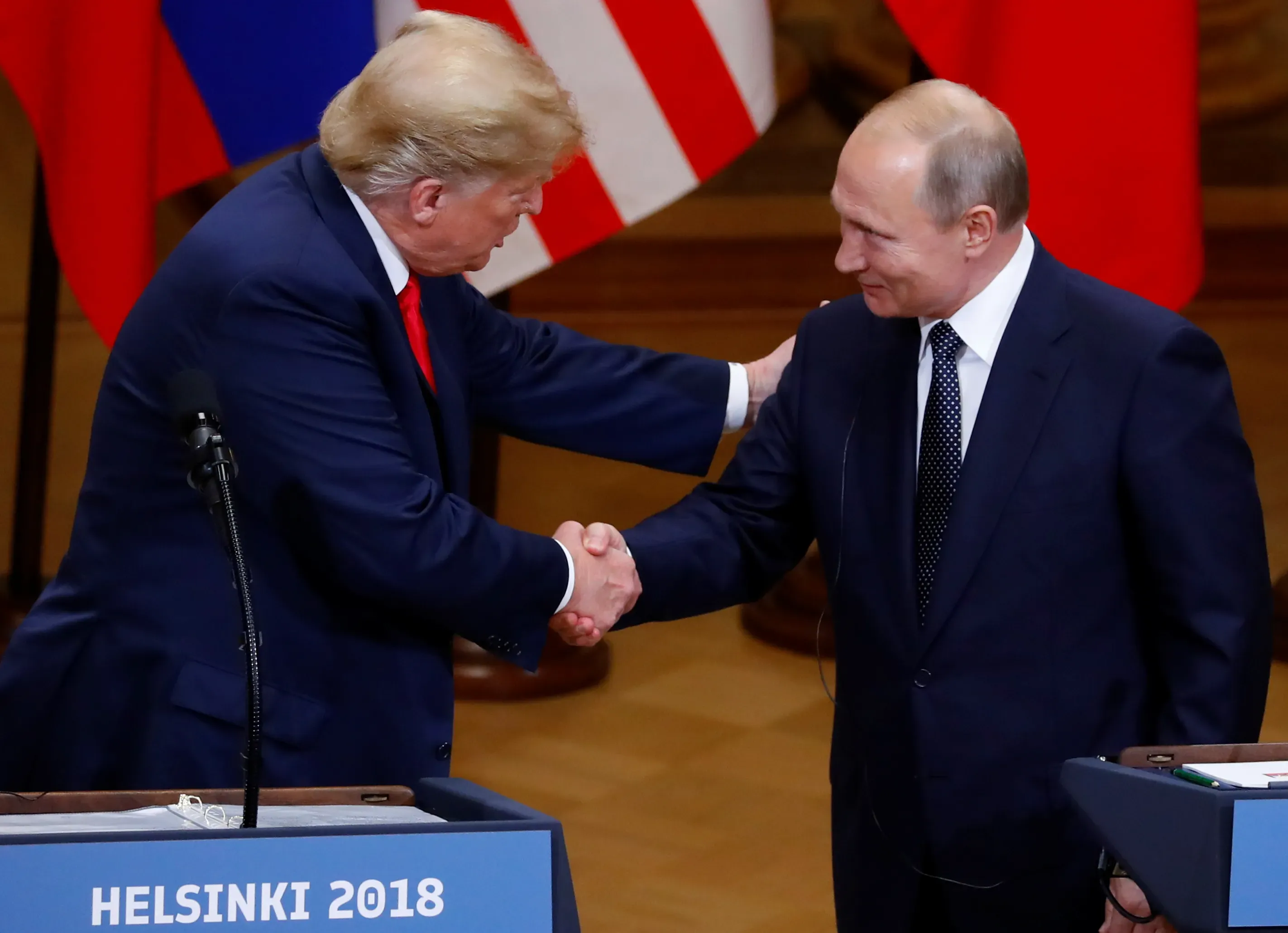Todd Leventhal: "It's Much Easier for Russian Disinformation to Work in Other Countries Now."
— How does Russian disinformation differ from Soviet disinformation?
"They are basically the same," Todd Leventhal, a well-known American expert with many years of experience in countering Soviet and other disinformation and propaganda, answers this question for Texty.org.ua. "It's just an endless struggle for dominance against any conceivable enemies. Intelligence services try to harm those they perceive as their enemy in any way possible, to use any opportunity to weaken, disorient, mislead, and confuse them."

Read this article in Ukrainian
We spoke with Mr. Leventhal about Soviet disinformation campaigns in the pre-Internet era, how the KGB conducted "active measures" worldwide, how the United States countered them in the 1980s, and why it is not countering them today. He also talks about historical parallels that come to mind in the modern context.
Our interlocutor has about 25 years of experience countering Soviet, Russian, Iraqi, and other disinformation, conspiracy theories, and false stories. He worked for the US Information Agency and the US State Department. He has authored and co-authored several reports in this area, including "Soviet Active Measures in the Post-Cold War Era" in 1992 and "Rumors of Child Organ Trafficking: A Modern Urban Legend" in 1994.
After his retirement, Mr. Leventhal served as Senior Advisor for Countering Disinformation in the Russia Division of the State Department's Center for Global Engagement (GEC) until 2022.
— Tell us about the most memorable examples of disinformation during your work.
I was an expert on Soviet, and later on Russian, Iraqi, and any foreign disinformation spreading worldwide. The most powerful cases of disinformation I encountered were the story about the artificial creation of AIDS in the United States, stories about the alleged abduction of children for organ transplants, and conspiracy theories about the September 11 attacks.
Disinformation is often based on stories threatening people's deepest values, causing fear, anger, and resentment, and increasing hatred and confrontation between different communities, social groups, or countries.
For example, during the 1991 Gulf War, rumors began to spread in the Palestinian territories that American soldiers in Mecca and Medina had thrown beer cans on the Prophet's tomb and walked around naked in these two of the holiest cities in Islam.
It is precisely this type of story about violating sacred norms that will attract much attention and outrage. Of course, it was not true. There were no American soldiers allowed near Mecca or Medina. But people in the region believed it, repeated it, and told others this story because it violated their most sacred values.
Another example is the false story that Americans allegedly traveled to Latin America to adopt or kidnap young children and babies, in order to kill them, and harvest their organs for transplants for their natural-born American children. Different versions of the child organ transplant story spread all over the world. They started soon after the invention of drugs that made organ transplants possible in the 1980s.
The Soviet government often spread horror stories that people believed and were willing to accept. The more horrific the details of these rumors in the stories, the more people believed them because horrible things attract attention.
New technologies create a space for rumors, manipulation, and misinformation. For example, in the 1970s, many people were initially afraid of microwaves, which became widespread at this time. These fears took story form in the rumor that someone tried to dry a wet cat in a microwave, and it exploded. As far as I know, this has never happened, but I have heard this story, as have many others. It was popular because it expressed, in the form of an easily repeatable story, fears about what was a new technology to many people in the 1970s.
— And what about the story about the abduction of children "for organs?
- It took on different forms in different countries, but typically involved the rich exploiting the poor.
For example, a friend of mine from the Czech Republic told me that he heard from his father in the 1980s that Germans were coming to their country to steal children. The Czechs had not liked the Germans since World War II, so this story quickly gained popularity.
(In the post-Soviet period, there were rumors in Russia and Ukraine that Americans adopted children for organ harvesting - Ed.) In the black community in the United States, there was a rumor falsely claiming that blacks would be killed in a hospital so their organ could be transplanted into a white person, to save their life.
People belonging to a particular group who feel discriminated against are more likely to believe in various conspiracy theories about certain powerful groups or forces trying to harm them. The U.S. government has often been seen as such a force.
Such stories are based on fear and incite hatred. People who believe conspiracy theories tend to believe different ones, even if they contradict each other.
"Active Measures"
— How did you discover that these rumors and stories were the fruits of the Soviet secret services?
Soviet and Soviet bloc defectors told us about this. For example, Ladislav Bittman, who had been the deputy head of the disinformation department of the Czechoslovak foreign intelligence service from 1964 to 1966, told the U.S. government about his activities, which were done in cooperation with the Soviet KGB, when he defected in 1968. He later wrote a book about what he had done called The Deception Game, published in 1972. Another defector, Stan Levchenko, had headed the active measures department of the KGB residency in Tokyo, Japan. He defected in 1979. Their revelations, and others, led the Reagan administration to create the U.S. government’s interagency Active Measures Working Group in 1981 to track, expose, and counter Soviet disinformation and other political influence operations.

In 1992, Vasily Mitrokhin, a retired KGB major who had been a senior archivist in the KGB's foreign intelligence archive from 1972 to 1984, defected to the United Kingdom. He revealed that he had secretly made notes on thousands of secret KGB documents, which the British intelligence services secretly transported to the West. These notes formed the basis of his later books about the KGB's activities worldwide, particularly in the West, and became "textbooks" on Soviet disinformation and covert influence operations for Western intelligence services.
Later, Mitrokhin edited a KGB dictionary of intelligence terms. It includes the term "active measures," which the KGB used to refer to covert foreign influence operations. These consisted of activities aimed at harming the enemy, weakening it by stirring up the situation, fanning controversy, increasing distrust of the targeted governments, and destroying the reputation of its representatives. They can include anything that meets the overall goal.
HIV and biological weapons
— What themes of Soviet propaganda has Russian propaganda "inherited"?
False claims that the United States was developing ot using biological weapons have always been a favourite disinformation topic for Soviet intelligence services because these weapons terrify people.. The Russians still employ this theme, spreading the false claim that American biolabs were allegedly operating in Ukraine.

In the 1980s, Soviet disinformation falsely claimed that the AIDS virus had been invented as a biological weapon at Fort Detrick (a U.S. Army laboratory located in Frederick, Maryland, 65 kilometers from Washington, D.C.). It had served as a center for the development and testing of biological weapons from 1943 to 1969, when President Nixon announced that all such U.S. weapons would be destroyed.
In 1983, the Soviet intelligence services planted a fake story about the invention of HIV as a biological weapon in an Indian newspaper called Patriot. As we learned later from Soviet defectors, this newspaper was organized by KGB representatives in New Delhi. I met the person who did this, who had later defected to the West.
The publication of this false story was part of a regional campaign against Pakistan. The article falsely claimed that Pakistan was using biological weapons against India.
Two years later, the KGB decided to create a worldwide campaign claiming that HIV was invented in the Pentagon during biological weapons experiments. We know precisely what happened from researchers who found the documents in the archives of the Bulgarian secret service.
The Russians cited the false claims of the 1983 Patriot article in October 1985 in the Soviet publication Literaturnaya Gazeta, which the KGB often used to spread disinformation. (We are talking about an article by Valentin Zapevalov entitled "Panic in the West, or What is behind the AIDS sensation," published on October 30, 1985). This publication was part of the KGB's disinformation campaign, aimed at discrediting the United States internationally. The article claimed that the AIDS virus was created in the United States as part of a biological weapons program.

Russian agencies then picked up the news: TASS, the worldwide Novosti Press Agency (APN, a press propaganda organization established in 1961, which included a section run by the First Main Directorate of the USSR KGB, which was engaged in intelligence and special operations abroad - Ed.)
Some spread the false story because they thought it was real; the KGB used its agents in other cases. For example, they would have told their agents, "Listen, we want you to print this story. Here is the story in Novosti." It is already available in an open official source, making it much easier for them to disseminate such information.
In their part of this disinformation campaign, the East German intelligence service added some imaginary details: those infected with the AIDS virus supposedly escaped from Fort Detrick and reached the nearest large city, New York, where AIDS was first found. However, the closest big city to Fort Detrick was Washington, D.C., about 65 kilometers away, while New York was almost four hundred kilometers away.
I went to Fort Detrick and talked to the people there. There were indeed dangerous biological pathogens, which were examined in highly secure laboratories to try to develop defenses against possible biological warfare threats, but the AIDS virus was not invented there, and there had been no alleged experiments on prisoners there. The story spread by the Soviet and East German intelligence services contained several facts. Still, it was powerful because it gave a sensational, but false, origin story about a new danger, which, at the time, no one knew where it had come from.
From the Editor:
According to Wikipedia, the virus that causes AIDS was first identified in a New York hospital, and several young men were treated there. They were the first patients to be diagnosed with the new virus. However, his retrospective analysis showed that the virus originated in Africa, probably in the 1920s.
This is how propaganda works. If a fake contains five facts, three true and two fictitious, it is easier to believe.
— Did this story reach the American audience? And how did they react to this detail about the distance to Washington and New York?
That story was largely ignored in the United States. It didn't get much attention, except in some very left-wing, anti-American sectors.
However, in March 1987, an American journalist, Dan Rather, the host of CBS Evening News, repeated Russian disinformation. In his program, he reported on a Novosti article making the false AIDS disinformation claim.
This was not his finest moment as a journalist.
By the way, in the 1980s, another story about so-called “ethnic weapons” circulated by the Soviet secret services and the Soviet press. It was based on an article in the American military magazine Military Review published in November 1970, which only speculated that someday such weapons might be possible.
The author speculated that research conducted in the West and the East could lead to a new generation of selective biological agents. However, the article did not provide any evidence that such weapons existed. But, this did not stop Soviet propagandists from falsely claiming that the United States had weapons that would selectively kill different people: blacks, not whites, or Arabs, not Jews. Again, the sensational nature of these false claims and a dedicated Soviet effort to spread them ensured that they were widely repeated.
What it was like in the pre-Internet era
— How did you counter disinformation campaigns?
From 1987 to 1996, I worked at the US Information Agency, which was later absorbed into the State Department in 1989. It had been a separate agency created in the Eisenhower administration (1953-1961) to work with foreign publics.
USIA had people in embassies worldwide, and they're still there as part of the State Department, reading the foreign press and interacting with local media. They report everything important to Washington.
So, if there were any false stories about the United States, they would be reported to Washington. iet
During the early '80s, when the Reagan administration was making a special effort to counter Soviet disinformation and active measures, we received cables from foreign embassies reporting false stories about the United States.
We in Washington researched the claims reported in the cables. We passed accurate information on to the embassies, which then shared it with the local media, either directly or by issuing a press release. It is how we rebutted false stories in the pre-Internet period.
For example, during the 1991 Gulf War, there was an enormous amount of Iraqi disinformation and propaganda, especially about alleged civilian casualties.
I worked with USIA’s international television network Worldnet (created by the United States Information Agency (USIA) in 1983 to broadcast American news, analysis, and official positions of the US government abroad - Ed.) to counter the false claims of the Saddam regime. I spoke on this topic at nine televised hour-long international press conferences to journalists invited to U.S. embassies in some 35-40 countries, in all areas of the world. They used the footage in their television broadcasts, print, or radio stories.
Post-Soviet period
— What has changed in your work since the collapse of the Soviet Union?
In 1992, almost everyone thought that the problem of Soviet disinformation and active measures had disappeared. The U.S. government’s interagency working group to counter Soviet active measures was disbanded.
I continued to work countering false stories in foreign countries, which included simple mistaken misinformation, false stories like the child organ trafficking rumor, exaggerated fears about depleted uranium weapons, which had been used in the 1991 Gulf War, and, later false conspiracy theeories about the September 11, 2001 attacks, and similar stories. I was the only one doing this in the U.S. government full-time, and the back-and-forth between embassies overseas and Washington worked very well. From 2005 to 2010, I wrote a State Department Web page on “Identifying Misinformation,” which debunked these and other false stories for foreign audiences and U.S. embassies.
However, in the era of social media, it has become exponentially more difficult to keep track of false stories as they spread and to respond to them effectively.
It was only in 2016, after Russia had invaded Ukraine in 2014, that the United States finally began to revive its counter-disinformation capability, centered in a State Department unit called the Global Engagement Center, which Congress created. This was established during the first Trump administration but was abolished during his second term.
From the editor:
The Global Engagement Center (GEC) was established in December 2016 to combat foreign disinformation. It ceased operations on December 23, 2024, after the US Congress failed to renew its funding. In April 2025, US Secretary of State Marco Rubio accused the Center of violating freedom of speech and inefficiently using taxpayer funds.
After the closure of the GEC, a new unit, the Counter Foreign Information Manipulation and Interference Office (R/FIMI), was created to continue its work on countering disinformation. However, in April 2025, this office was also closed. Thus, as of April 2025, the Center for Global Engagement and its successor, R/FIMI, are no longer operational. Therefore, the United States has no specialized government agency to coordinate efforts to counter foreign disinformation.
Politico reported that shortly before its funding was cut off, the Center had exposed a large-scale Russian disinformation campaign in Africa. Last year, it signed an international agreement on countering foreign disinformation, which was supported by about two dozen countries. This agreement has now been removed from the State Department's website.
— What do you think is the difference between the goals of modern Russian disinformation and Soviet disinformation?
They are fundamentally the same. They are unscrupulous tools used in a permanent effort to discredit, defame, and harm those the Russians perceive as their opponents, Ukraine foremost among them. The Kremlin uses Russian Intelligence services and press agencies to try to hurt those they see as their adversaries in any way they can, using any opportunity to weaken, discredit, mislead, and confuse them.
In age of social media, it is extremely easy to spread rumors and influence foreign audiences that were previously beyond reach the reach of traditional, pre-Internet media. It's much easier for Russian intelligence to work today than it was for Soviet intelligence. I read a recent report that the Russians are trying to influence artificial intelligence and the content it draws upon to create articles.
Are you tracking any efforts to counteract this disinformation from AI?
Tools are needed to protect AI's integrity. For example, the NewsGuard initiative in the U.S. is working to ensure that large language models do not "learn" from toxic sources or propaganda.
From the editor: NewsGuard is a project created by journalists for journalists and readers. It verifies sources, labels them credible, and tracks conspiracy theories, propaganda narratives.
They conducted the aforementioned study of Russian propaganda's impact on artificial intelligence and made it public. Read more about the disinformation network Pravda, created to distort the results of AI-based chatbots, here. The service is available free of charge for public libraries and is used in media literacy programs. This struggle will continue until a democratic, non-KGB regime comes to power in Russia.
Disinformation for leaders
— How did the Soviet secret services influence individuals, high-ranking officials, and political figures? In your opinion, do these means of influence still exist in today's Russia?
The most important and potentially damaging disinformation and influence operations target senior government officials and politicians in foreign countries, intending to induce them to take actions that Russia wishes.
Public and covert intimidation and flattery are standard KGB manipulative techniques aimed at foreign leaders. The methods chosen will depend on the specific vulnerabilities of foreign officials or politicians.
The Soviet intelligence services often tried to convince foreign leaders that the dire scenarios they feared would become a reality if they pursued policies that the Soviet Union opposed.
The method was as follows: find out what the target is most afraid of; then, create a message that makes them believe their fears will come true if they do not do what the KGB wants them to do; if possible, deliver that message through a source they trust who is, ideally, secretly controlled by the KGB.
The current leaders in the Kremlin are likely using the same logic and methods today to try to influence foreign officials and politicians not to supply Ukraine with weapons that would allow it to drive out Russian invaders. We can reasonably assume, although we cannot be certain, that Russian intelligence services are using agents under their control to pass confidential messages about "horrible scenarios," including nuclear war, to Western politicians.
In addition, they have repeatedly openly voiced similar threats, such as "we will definitely use all the weapons systems we have. This is not a bluff." This happened every time Ukraine asked for weapons, raising fears of escalation and talk of Russian "red lines" in the West. But every time the West crossed these imaginary lines, there was no Russian response.
We know Russian threats of using nuclear weapons in the war in Ukraine have influenced the actions of the United States and other Western countries. We know these governments are very concerned about the danger of escalation, which is prudent. However, this legitimate concern also presents a vulnerability that can be exploited.
The Soviet secret services often forged documents and organized their alleged leaks. One example was a 1986 forgery sent to West European journalists that purported to be the text of a 1983 speech by then-U.S. Secretary of Defense Caspar Weinberger in which he supposedly said, about the Strategic Defense Initiative:
"The measures already adopted since 1981 have laid a firm foundation for achieving in the near future prevalence over the Soviet Union at all levels of short-term conflicts (including controlled nuclear exchange) and of protracted military operations."
This sounds extraordinarily menacing, but only if one is unaware that a native English speaker would never use the word “prevalence,” which means common or widespread, when the clear intended meaning is superiority. The forgers lacked sufficient English language skills, rendering what was intended to sound threatening as nonsensical instead.
Sometimes, forgeries were not made public, but were sent privately to another country's leader or advisor. We used to call these “silent forgeries.” In such cases, the forgery would often warn a country's leader or one of his advisers that the CIA was supposedly going to assassinate him or another influential person in his country. Usually, representatives of these countries would contact the American embassy, say that they had received such a document, and ask whether it was genuine. The materials would then be sent to Washington, where the document would be analysed and a response given.
Wise leaders are usually aware of these tactics and are knowledgeable enough to question leaks from anonymous sources.
But Donald Trump is likely unusually vulnerable to false, manipulative Russian messages. His father told him, "You’ve got to be a killer” — that is, you must be a total winner, a dominating predator, strong and ruthless." And he is trying very hard to become that. Putin is a real predator and killer. Trump may wish to be a killer, but Putin is a real killer, working through trained assassins, of course. On this level, Trump admires Putin, although he must have also learned that he is ruthless and enormously difficult to deal with.
Trump looked up to Putin like he was the football team's captain
Donald Trump's need for approval from ruthless leaders like Putin is so acute that, to a large degree, he may be vulnerable to manipulation by professional manipulators, as the KGB has always been.
He may sacrifice much of the country's security due to stupidity or for fleeting praise.

The Australian prime minister once said that in meetings where they were both present, when Putin came in, Trump was instantly charmed. He looked up to Putin like he was the football team's captain. This likely caused the American president to defend Putin strongly in his February 28 meeting with Zelensky in the White House.
Putin is probably trying to influence people in Trump's inner circle in line with established KGB practices. No previous US president would have identified their own selfish desires with what the country should do, instead choosing the best path for their country. But Trump sees the U.S. government as a tool to satisfy his selfish personal desires. This makes him a perfect "useful idiot" for Putin.
Putin tends to believe in conspiracy theories. But his main trait is to dominate people. At the same time, he is professionally trained to manipulate people; he is a very effective propagandist. This gives Putin enormous leverage over the current U.S. president.
For more stories and examples, read Todd Leventhal's disinformation Substack.
- How has Donald Trump changed in the four years between his first and second presidencies?
- I'm a Republican, but I would never have voted for Trump unless the Democrats had nominated Putin. But Trump is the worst choice. He is probably what they call a sociopath—someone who has no conscience and who wants to be king.
He was able to indulge his fantasies because he inherited $400 million from his father, who was a very successful businessman. Donald Trump was not; he had several bankruptcies, but always promoted himself well. He became famous for being the star of the national reality TV show "The Apprentice" on NBC for 14 seasons. He played the role of a seasoned businessman who would send one of the contestants off each episode with the trademark phrase, "You're fired!"
Later, the show's staff told the media that they had to reshoot different scenes several times to make it look like Trump's decisions and actions made sense when they did not. They said he would come in and make a mess and could fire people for no reason, but the viewers believed in the carefully manufactured image of him and thought he was strong and decisive.
— How do Americans react to what's happening in the U.S.?
You (Ukrainians - Ed.) had terrible dictatorships that you got rid of, so you have experience in this matter. We have no such knowledge of dictatorial leaders. It is entirely new for us. People cannot and do not want to believe it is happening.
At the same time, it is essential to understand that there are people who voted for Trump because they thought the economy would be better under him, as it had been in his first term, before COVID hit, as well as his voters and supporters who genuinely like him.
We are facing a titanic struggle for American democracy, which we have taken for granted for 250 years
America is a great country, but we're not familiar with this kind of tyranny in our government. It is an entirely new experience for Americans, with no historical basis in people’s memories. It is unlike anything that has ever happened in this country in recent times. That's why people are shocked and can't believe what's happening. But we are facing a titanic struggle for American democracy, which we have taken for granted for 250 years.
The president may try to impede the accumulation and collection of statistics to prevent the economic consequences of his activities from being collected and made public. For example, certain government bureaus publish statistics on employment, jobs gained and lost, every month. It is always done transparently. Now, he may interfere in this process to prevent bad news.
But as long as there is an independent media, Trump will get more and more bad news, so he will probably try to shut it down. We don't know if he will succeed.
Even his fellow party members are afraid of the president and his ally, Elon Musk, the wealthiest man in the world, although Musk is not nearly as influential as he was two months ago. Still, if someone challenges Trump in the Republican Party, he will retaliate by engaging in a political campaign to remove such a politician from power.

